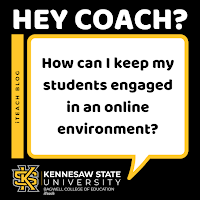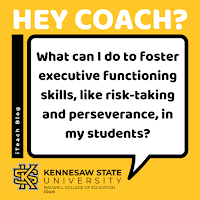TRMS PREP 2.0 Students Present at Microsoft Store
Remember your K-12 years? Learning was fun and as simple as showing up to school – receive Direct Instruction – complete worksheets – get a grade – Repeat. Many in our generation survived the school systems in this manner and if your curiosity led you to read this post, your education is paying off. So, there’s nothing to worry about, right?

Well, there is a lot to worry about and that is because the world today is no longer as simple as it was yesterday, and the gap is even wider when you compare it with the world that past generations lived in. Technology has changed our world in ways that we never imagined; this is the same world that we will leave in the hands of the students whom we strive to educate today. If we must prepare them to be competent in a current digital-age culture, we must effectively incorporate digital tools into their education.
If I may digress briefly, do you watch TV at all? I’m almost certain that your response is “Yes”. We all know that commercials have certainly become a part of our entertainment world. Notice that most commercials focus on providing customers options that meet their individual interests and needs as prospective customers. From credit card commercials to beverages, insurance companies, etc the purpose of the commercials remain the same – to gain your business. Each company prides itself in providing choice and even a voice to your needs as a potential customer so that they may gain and keep your business for as long as possible. What has this got to do with learning?
As educators, we are in the business of teaching and learning. Whatever it takes to legitimately earn the business of students for a lifetime is certainly worthwhile. Personalized Learning is a set of principles that guide educators to “market” learning to students so that they will become lifelong patrons of knowledge. Therefore, worksheets and Direct Instruction no longer make the cut when students live and breathe technology – cell phones, laptops, ipads, video games, etc. As educators, we must be creative about how we apply these digital tools to get the attention of all learners and engage them in learning activities that meet curricular standards based on their unique interests.
Ms. Green is the Graduation Coach and Mr. Johnson is the Guidance Counselor at Taylor Road Middle School. They have collaborated with a team of teachers and myself to mentor the PREP 2.0 students in their year-long research project on Football Safety Protocols. First, let me emphasize that they are not in teaching positions but as individuals who promote the social, emotional, and academic well-being of students, they recognize the need to be creative when they engage students to become self-directed learners.
Both individuals and other mentors have embraced the concept of “individualized” learning as they strive to actively engage the minds of 7th and 8th grade students in after school PREP 2.0 mentoring club. The students chose an individualized purpose for a research based on their common interest – Football and Sports Safety. They were given a voice as they determined how to collaborate to conduct their research and how to demonstrate what they learned. Microsoft SWAY presentation tool was used to document this research for a presentation to an authentic audience when completed. This approach addressed 2 major Principles of Personalized Learning that Fulton County Schools promotes: (i) Choice and Voice (ii) Choice in Demonstrating Learning.

At the beginning of the school year, PREP 2.0 students used their 1:1 device to research Football Safety Protocols from various online resources. Thanks to Microsoft Global Skypeathon, students interviewed the Microsoft Director of Education in New Jersey, Adam Reed. This was particularly important to their research since Microsoft provides the official NFL device – The Microsoft Surface. During their Skype interview, students learned how Microsoft is using technology to improve football safety by adding sensors to the shoulder pads of football players. Analytic data from the sensors are analyzed by engineers and used to improve the safety of the sport.

PREP 2.0 students took their research further to a real football Wide Receiver, Brian Finneran, former Atlanta Falcons. They conducted an additional Skype interview with him to hear a first-hand account of some of his experiences as an 11-year career football player. The students learned a lot including some of the signs of concussion, which Mr. Finneran witnessed as his teammate concussed.

As a culminating event to the year-long research project, students went on a field trip to the Microsoft Store at Perimeter Mall. This field trip experience began with an Hour of Code where students applied higher order thinking to learn basic programming language in the form of an interactive video game. The coding experience was followed by a presentation of their research to an authentic live audience.
In a digital age culture, it is expected that when we set out to personalize student learning, we use technology to gain their interest and keep them engaged. We must be cautious though, not to use technology for the sake of using it as that would be a disservice to our youth. To reflect on our use of technology as educators, let’s consider the Technology Integration Matrix as a guide to our use of digital tools and resources for Personalized Learning.


The dedication and creativity shown by the PREP 2.0 staff indicate transformative levels of technology integration. Their collective commitment to the research and effective technology integration for Personalized Learning were the real driving forces. As a result, students were involved in academic activities that supported their social and academic growth; this project met the highest levels of technology integration across all 5 attributes: ACTIVE, COLLABORATIVE, CONSTRUCTIVE, AUTHENTIC, GOAL-DIRECTED.
To elaborate, students were engaged in unconventional ACTIVE learning environments with digital tools that promoted the purpose of their research not the technology; that is, the focus remained on Sports Safety Protocols, not the Sway or Skype. Students used the Sway to COLLABORATE with their peers in real time, irrespective of physical locations or conflicts in their daily schedules. They also used Skype to interview high profile individuals, which may not have been possible to do in person - Interview of an executive member of a Fortune 500 company, Microsoft (Adam Reed) and a celebrity football player (Brian Finneran). PREP 2.0 students used online resources through BING search to CONSTRUCT knowledge about their research topic; for example, pictures of a normal brain and CTE-affected brain.

The coding experience allowed students to pursue a GOAL-DIRECTED approach to metacognitive activities that would not have been possible without technology and the field trip experience. Finally, the most significant aspect of this experience (in my opinion) is that the entire project was AUTHENTIC because it has real-world value to students outside the classroom. Most teenage students either play football or enjoy watching football; this has a real-world appeal to many parents and youth. Besides, who doesn’t like football? We can all use a little excitement in our learning experiences and that is what Personalized Learning is all about.
When we use technology to engage students, they will be prepared to adapt to an evolving digital age culture as global citizens. That is what Mr. Johnson and Ms. Green promote with PREP 2.0 mentoring initiative. It has been my honor to support the PREP 2.0 initiative with Technology Integration.
--
Mrs. Chioma Anuebunwa
Kennesaw State University iTeach



Comments
Post a Comment